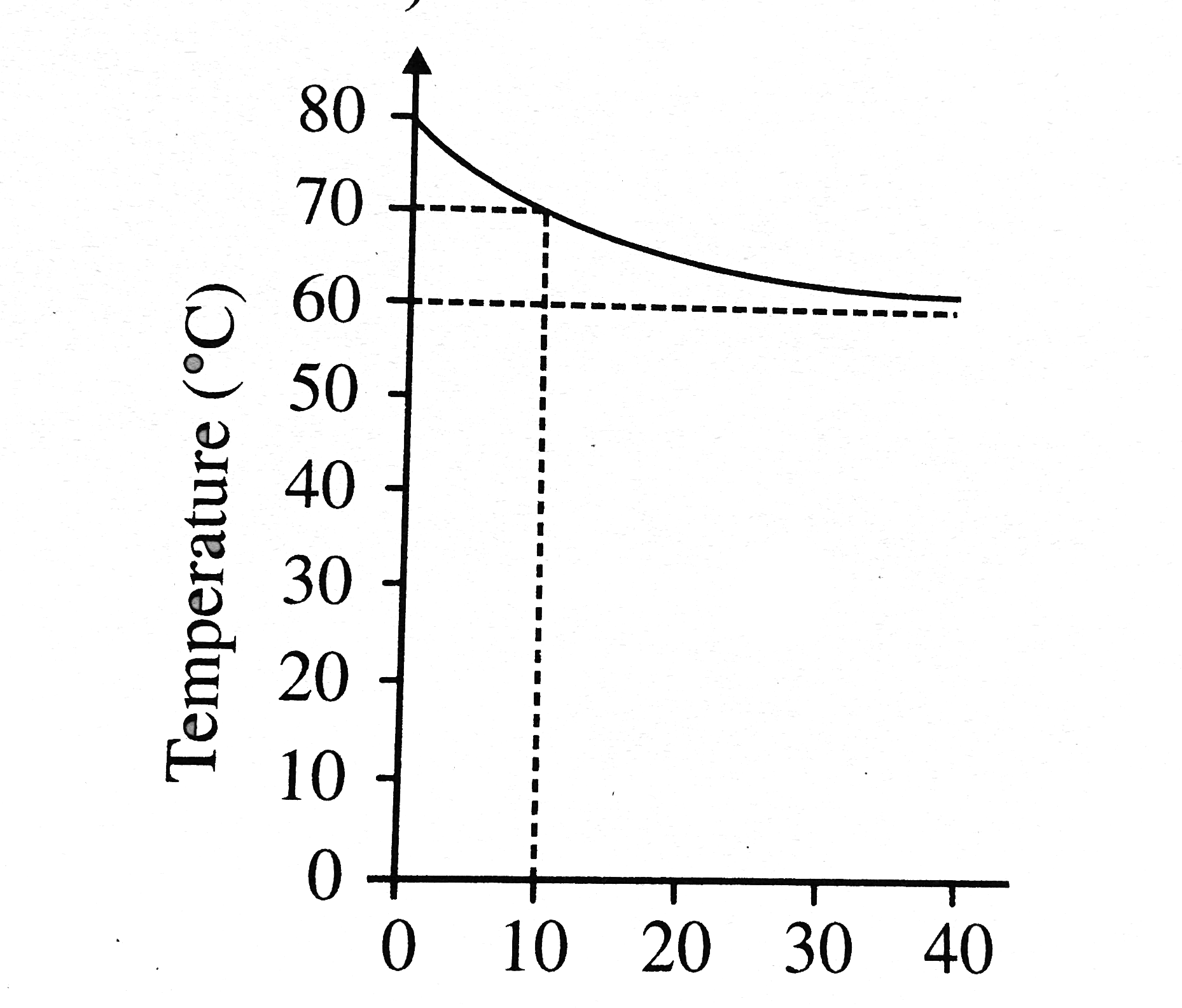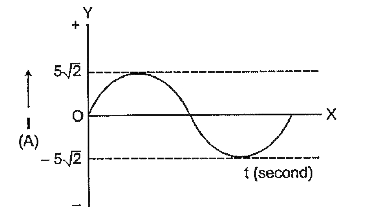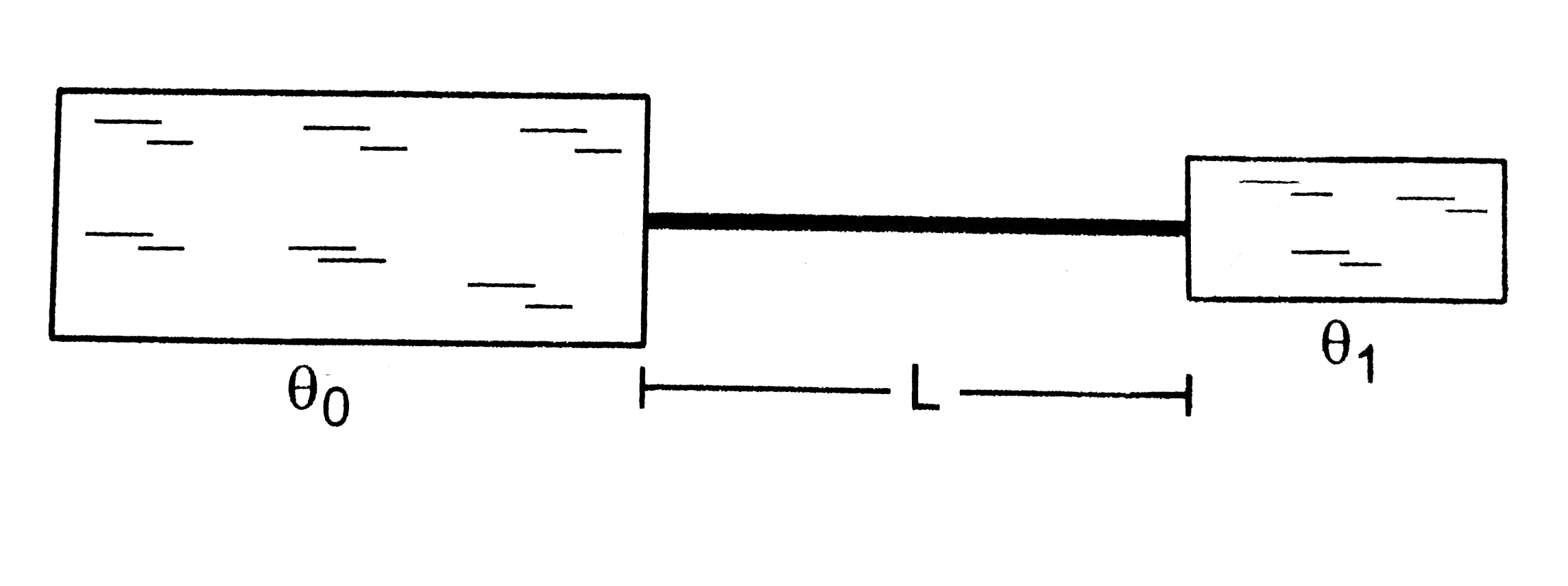
A vessel contains M grams of water at a certain temperature and water at certain other temperature is passed into it at a constant rate of mg/s. The variation of temeprature of the mixture with time is shown in Fig. The values of M and m are, respectively (the heat exhanged after a long time is 800 cal)
(a)40 and 2
(b)40 and 4
(c)20 and 4
(d)20 and 2
The correct Answer is:B
Evidently the initial temperature of the water contained in the vessel (Mg) is 80∘C and the temperature of the water passed into it is 60∘C as the final temperature of the mixture tends to attain a value of 60∘C
M×1(80−70)=m×10×1(70−60)
or M/m=10
since the heat exhanged after a long time is 800 cal.
(Mg)(1cal/(m∘C)(80−60∘C)=80cal
or M=40g
⇒m=4g
Topper's Solved these Questions
- BOOK - CENGAGE PHYSICS ENGLISHCHAPTER - CALORIMETRYEXERCISE - Multiple Correct25videos
CALORIMETRY
- BOOK - CENGAGE PHYSICS ENGLISHCHAPTER - CALORIMETRYEXERCISE - Comprehension30videos
CALORIMETRY
- BOOK - CENGAGE PHYSICS ENGLISHCHAPTER - CALORIMETRYEXERCISE - Subjective25videos
CALORIMETRY
- BOOK - CENGAGE PHYSICS ENGLISHCHAPTER - BASIC MATHEMATICSEXERCISE - Exercise 2.620videos
BASIC MATHEMATICS
- BOOK - CENGAGE PHYSICS ENGLISHCHAPTER - CENTRE OF MASSEXERCISE - INTEGER_TYPE1videos
CENTRE OF MASS
Similar Questions
Heat energy at constant rate is given to two substances P and Q. If variation of temperature (T) of substances with time (t) is as shown in figure, then select the correct statement
View SolutionWater is being poured in a vessel at a constant rate αm2/s. There is a small hole of area a at the bottom of the tank. The maximum level of water in the vessel is proportional to
View SolutionVariation of alternating current .l. with time .t. is shown in the graph below.

What is ther.m.s.value of this current ?View SolutionFigure shows a large tank of water at a constant temperature θ0 and a small vessel containing a mass m of water at an initial temperature θ1(<θ0). A metal rod of length L, area of cross section A and thermal conductivity K connects the two vessels. Find the time taken for the temperature of the water in the smaller vessel to become θ2(θ1<θ2<θ0) . Specific heat capacity of water is s and all other heat capacities are negligible.
 View Solution
View SolutionFigure shown two adiabatic vessels, each containing a mass m of water at different temperature. The ends of a metal rod of length L, area of cross section A and thermal conductivity K, are inserted in the water as shown in the figure. Find the time taken for the difference between the temperature in the vessels to become half of the original value. The specific heat capacity of water is s. Neglect the heat capacity of the rod and the container and any loss of heat to the atmosphere.
 View Solution
View SolutionAluminium container of mass of 10 g contains 200 g of ice at−20∘C. Heat is added to the system at the rate of 100 calories per second. What is the temperature of the system after four minutes? Draw a rough sketch showing the variation of the temperature of the system as a function of time . Given:
Specific heat of ice = 0.5calg−1(.∘C)−1
Specific heat of aluminium = 0.2calg−1(.∘C)−1
Latent heat of fusion of ice = 80calg−1View Solution2 litres water at 27∘C is heated by a 1kW heater in an open container. On an average heat is lost to surroundings at the rate 160J/s. The time required for the temperature to reach 77∘C is
View SolutionA vessel of volume 0.2m3 contains hydrogen gas at temperature 300 K and pressure 1 bar. Find the heat required to raise the temperature to 400 K. The molar heat capacity of hydrogen at constant volume is 5cal/molK.
View SolutionHeat is supplied to a certain homogeneous sample of amtter, at a uniform rate. Its temperature is plotted against time, as shown in the figure below. Which of the following conclusions can be drawn?
 View Solution
View SolutionAn earthen pitcher loses 1 g of water per minute due to evaporation. If the water equivalent of pitcher is 0.5 kg and the pitcher contains 9.5 kg of water, calculate the time required for the water in the pitcher to cool to 28∘C from its original temperature of 30∘C Neglect radiation effect. Latent heat of vapourization of water in this range of temperature is 580 cal/g and specific heat of water is 1kcal/gC∘
View Solution

